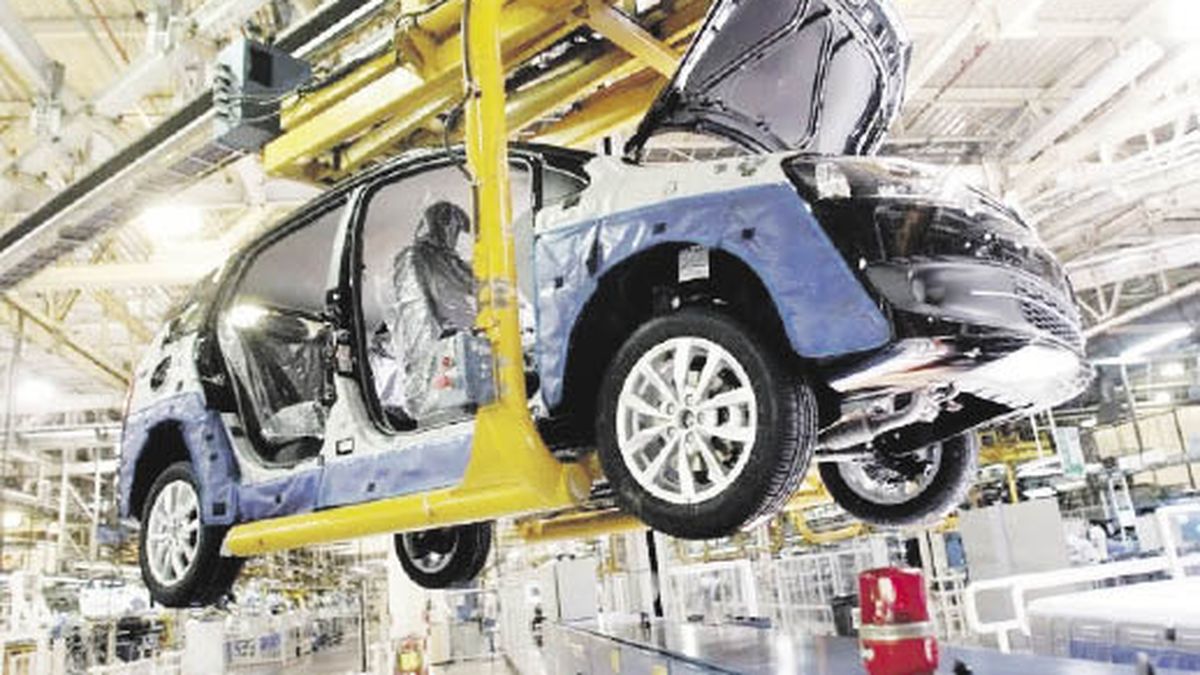Lights and shadows
In the Ministry of Industry, the activity numbers stand out: in the accumulated up to November, production registers a growth of 5.3% year-on-year, and 12% against 2019, with the installed capacity at almost 70%. They welcome the anticipated data from the CEP XXI report, which indicated that there was a month-on-month rise of 1.2% in November, after several months of decline. “From the beginning, the objective was to order the public accounts, sustaining the level of activity and employment,” said De Mendiguren.
Along the same lines, Castro, director of the auto parts company Industrias Guidi, analyzed: “Activity recovered, but in November we are beginning to notice a slowdown in some sectors. It is also positive that we managed to recover jobs, but unfortunately there are more than 100,000 jobs to reach the maximum of 2013”. Until September, the manufacturing industry added 51 thousand new jobs.
Another of the data that stands out at the official level is that of investment, with the highest rate in the last ten years, around 22% of GDP, being the component of demand that grew the most compared to 2021 and 2019. About At this point, Castro stated that “it is not possible to sustain these levels without financing.”
“Investment, facilitated by an appreciating exchange rate, is good news, but not strong enough for structural change dynamics, with little research and development,” he added.
For the economist, more than half of the productive apparatus is alien to industry 4.0, hampered by financing, the lack of human resources and the need for digital infrastructure.
systemic problems
As short-term problems, the three experts in industrial issues talk about the lack of dollars. “It is without a doubt the greatest difficulty today, the decision is that each available dollar has a productive destination,” he said. From Mendiguren.
Castro added: “Access to foreign currency to ensure the inputs to produce and invest is an uncertainty going forward, fortunately in recent weeks the system has been freeing up, but we still do not know what to expect in 2023, the sector needs to negotiate with foreign suppliers or define investments that require dollars.
“The main thing is to resolve issues that get us out of this volatile macroeconomics to which we have become accustomed in the last decades, which includes reduce inflation month by monthbecause Entrepreneurs had to dust off inflation survival manuals because it is a challenge to set prices when there is no certainty of the replacement cost”Castro explained.
Kosacoff agreed that the biggest problem is the macroeconomy, with multiple exchange rates that generate “distortions” and a lack of long-term incentives.
In addition, in Industry they stood out as a problem for the industry the fall in the purchasing power of wages. “In the domestic market, the processes to generate dynamic competitive advantages take place, because before exporting, that is where the learning processes take place to later be able to reach the best international practices,” explained Kosacoff.
But in addition to the conjunctural, Kosacoff considered that systemic problems remain unresolved: “The industry has serious infrastructure problems and high logistics costs, high tax pressure and a divided labor market, with an Argentina divided into three, where an informal part is excluded.” Castro also asked to resolve the tax issue “because the formal sector cannot be asked to pay more, because the informal sector does not stop growing.”
Opportunities
When asked which industrial sector would stand out in 2022, De Mendiguren referred to the automotive. “It was one of the best, because it changed the model, it is more oriented towards the foreign market, it obtained a law that came out by consensus in Congress and it symbolizes very well what others should replicate.” With almost 500,000 units produced, it presents the highest levels since 2015, while exports reached maximum levels since 2014.
In addition to the automotive sector, Kosacoff referred to the industry in the energy sector. “Not only because of the increases in production, but also because of the improvement in productivity, with levels of efficiency similar to those of the United States.” In fact, the availability of energy resources will imply an opportunity for the industry: “There is a unique opportunity to develop energy-intensive industries, for example a case like the Dow company, which can expand the production of petrochemicals, which will add to the generation of value, employment and currencies”. Along the same lines, De Mendiguren added: “A fundamental policy that we are concretizing is the infrastructure for energy, especially in gas, which for many years will give very good prices for the industry and will provide greater competitiveness.”
Source: Ambito
David William is a talented author who has made a name for himself in the world of writing. He is a professional author who writes on a wide range of topics, from general interest to opinion news. David is currently working as a writer at 24 hours worlds where he brings his unique perspective and in-depth research to his articles, making them both informative and engaging.




